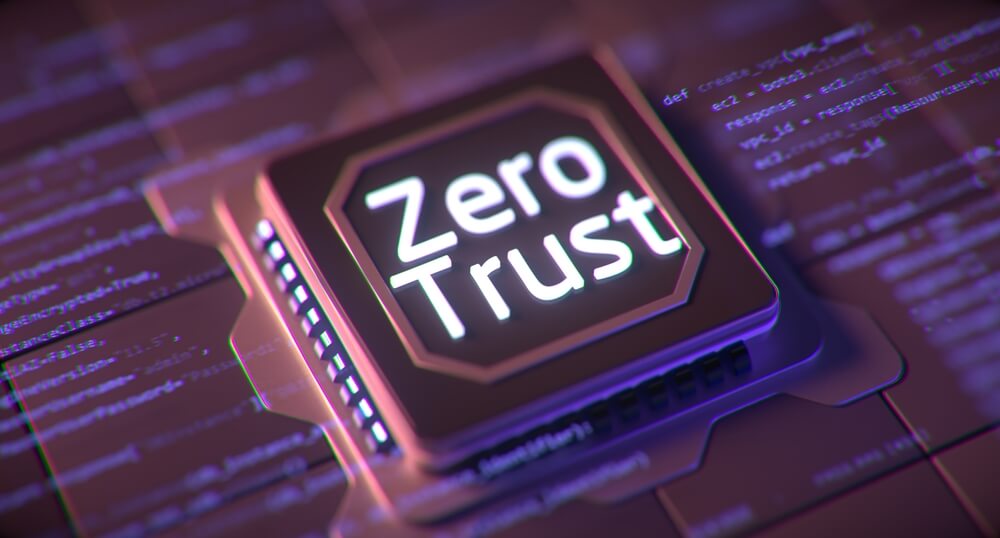“Never trust, always verify” is the Zero Trust catchphrase. The Zero Trust approach is an evolving data loss protection model that focuses on users, assets, and endpoints. While it sounds straightforward—requiring authentication and authorization for every access request, without assuming any inherent trust—it involves much more. A critical aspect of Zero Trust is its effectiveness in preventing insider risks by continuously monitoring and verifying user activities and access levels.
This article explores the core principles of Zero Trust, its benefits, practical implementation tips, myths and misconceptions, and how Safetica can help integrate Zero Trust principles into your organization to enhance data security.
The 5 pillars of Zero Trust
At the heart of Zero Trust are five foundational pillars: identity, device, network, application, and data. Each pillar plays a critical role in building a secure and resilient Zero Trust framework.
![]()
Identity: This pillar focuses on verifying that the person or system trying to access your network is who they claim to be. Use strong authentication methods like multi-factor authentication (MFA) to verify user identities. This means requiring additional verification steps beyond just a password, such as a code sent to a user’s phone.
![]()
Device: Ensuring that the devices accessing your network are secure and compliant with your security policies. Use endpoint detection and response tools to monitor and secure all devices accessing the network. This involves checking that devices are free from malware and have up-to-date security patches before they can access your network.
![]()
Network: This pillar focuses on segmenting your network to limit the movement of threats and reduce the impact of potential breaches. Use micro-segmentation and least privilege access principles. This involves breaking your network into smaller, isolated sections and ensuring users only have access to the parts of the network necessary for their job.
![]()
Application: Ensuring that applications and the data they handle are secure from unauthorized access and vulnerabilities. This includes using software that can detect and respond to security threats in real-time, ensuring only authorized users can access sensitive applications.
![]()
Data: Protecting your data, whether it's being stored, transmitted, or used, from unauthorized access and breaches. Use strong encryption and robust Data Loss Prevention (DLP) solutions like the one offered by Safetica. This means applying encryption to data in transit (when it's being sent) and at rest (when it's stored), and continuously monitoring for unauthorized access or data leaks.
Key benefits of the Zero Trust Approach
By continuously verifying every access request and implementing strict access controls, you can protect your organization’s sensitive data from both internal and external threats. Zero Trust provides a robust framework that adapts to modern challenges, such as remote work and cloud adoption, ensuring that your organization remains resilient against evolving cyber threats. Additionally, Zero Trust helps maintain regulatory compliance and builds trust with customers and partners through proactive data protection.

Practical tips for implementing Zero Trust
Implementing Zero Trust within your company or organization can be challenging, but following these practical tips can help ensure a smooth and effective deployment. These guidelines will assist you in addressing various aspects of your network and security infrastructure.
- Map your network architecture: Start by identifying all network components, including users, devices, services, and data. This comprehensive mapping helps you understand what needs protection and where potential vulnerabilities lie.
- Establish unique identities: Ensure every user, device, and service has a unique identity. Implement strong authentication methods, such as multi-factor authentication (MFA), to verify these identities consistently.
- Assess user behavior and device health: Continuously monitor and evaluate user behavior and device health, especially if you allow BYOD—bring your own device. Use behavioral analytics and endpoint detection and response (EDR) tools to identify anomalies that may indicate a security threat.
- Define authorization policies: Develop clear and granular authorization policies that dictate access permissions. Use these policies to evaluate each access request based on predefined criteria.
- Utilize multiple signals for authentication: Authenticate and authorize access based on multiple signals, including device location, device health, user identity, and behavior. This multi-faceted approach ensures a comprehensive risk assessment.
- Implement continuous monitoring: Continuously monitor users, devices, and services to detect and respond to threats in real-time. Integrate monitoring tools with your authorization policies to maintain a dynamic and responsive security strategy.
- Adopt a Zero Trust mindset for all networks: Apply Zero Trust principles to all network segments, including local networks. Do not assume any network is inherently secure.
- Leverage Zero Trust-compatible services: Choose security services and products that are designed to integrate with Zero Trust principles. These tools should support strong authentication, continuous monitoring, and adaptive access controls.
- Segment your network: Use micro-segmentation to limit lateral movement within your network. By dividing your network into smaller, isolated segments, you can contain breaches and prevent them from spreading.
- Educate and train your team: Ensure your staff are well-versed in Zero Trust principles and practices, and in data security as a whole. Regular employee training and awareness programs can help reinforce your company’s security policies.

What differentiates Zero Trust from other security models?
Zero Trust operates on the principle that threats can come from both outside and inside the network and makes sure to monitor access continuously. It’s a departure from more traditional methods like castle and moat, perimeter-based security, and firewalls, which, once inside the perimeter, trusted every user by default. But securing a network from the outside and calling it a day is wildly insufficient and opens doors to security breaches.
Here are the main ways in which Zero Trust stands apart from traditional security approaches:
Perimeter-based security
- Traditional approach: Focuses on securing the network boundary.
- Zero Trust: No network perimeter; every access request is verified continuously, regardless of location.

Implicit trust vs. no trust
- Traditional: Trusts entities within the network once verified. Once you’re in, you’re in.
- Zero Trust: Trust is never assumed; every user, device, and application must be continuously authenticated and authorized, even if they had been trusted before.
Static vs. dynamic security
- Traditional: Relies on static security measures, like firewalls and VPNs.
- Zero Trust: Employs dynamic, real-time monitoring and access controls, adapting to threats as they evolve.
Scope and implementation
- Traditional: Often uses siloed security measures, focusing on specific aspects like firewalls or endpoint protection.
- Zero Trust: Integrates a holistic approach, encompassing identity verification, device security, network segmentation, application control, and data protection.
Internal vs. external threats
- Traditional: Primarily designed to defend against external threats.
- Zero Trust: Recognizes that threats can come from both inside and outside the network, applying strict controls across all access points. Learn more about Insider Threats.
Put simply, it’s no longer just a case of “we don’t trust you until we do”, it’s more along the lines of “we don’t trust you or your device until we do, and then you need to keep proving yourself to us or else we’ll stop trusting you in a heartbeat.“
Where did Zero Trust come from?
The Zero Trust concept has been evolving since the early 2000s. In 2009, Google began developing the architecture after experiencing a massive breach, known as Operation Aurora. The term “Zero Trust” was coined by analyst John Kindervag of Forrester Research in 2010.
In the US, the National Institute of Standards and Technology (NIST) published the NIST SP 800-207 document in August 2020, which provides comprehensive guidelines for implementing Zero Trust Architecture (ZTA). The Biden administration mandates these guidelines for all US Federal Agencies.
Similarly, the UK's National Cyber Security Centre (NCSC) has developed Zero Trust principles that mirror the US guidelines.

Common misconceptions and risks associated with Zero Trust
Zero Trust is often misunderstood, leading to several common misconceptions. Let’s debunk some of these myths to provide a clearer understanding of what Zero Trust truly entails:
Zero Trust is too complex:
- Myth: Implementing Zero Trust is too complicated for most organizations.
- Reality: While Zero Trust does require thoughtful planning and execution, it is not inherently more complex than other security frameworks. Many organizations start by applying Zero Trust principles in specific areas and gradually expand. With the availability of modern tools and services, even small and mid-sized businesses can effectively implement Zero Trust without an overwhelming level of complexity.
Zero Trust is only for large enterprises:
- Myth: Zero Trust is only suitable for large enterprises with extensive resources.
- Reality: Zero Trust principles can benefit organizations of all sizes. Small and mid-sized businesses can implement scalable Zero Trust solutions tailored to their specific needs. By focusing on critical assets and gradually expanding their Zero Trust practices, smaller organizations can achieve robust security without needing the vast resources of large enterprises.
Zero Trust eliminates usability:
- Myth: Zero Trust makes systems too restrictive and hampers usability.
- Reality: While Zero Trust does enforce strict access controls, it is designed to balance security and usability. Modern Zero Trust solutions integrate seamlessly with existing workflows, ensuring that security measures do not become a hindrance to productivity. Adaptive and context-aware authentication methods can enhance both security and user experience.
Zero Trust means zero breaches:
- Myth: Implementing Zero Trust guarantees that no breaches will occur.
- Reality: While Zero Trust reduces the risk of breaches by limiting access and continuously monitoring activities, it does not make an organization completely invulnerable. However, it does help to contain and minimize the impact of data breaches.
How Safetica can help with applying Zero Trust principles in your organization
Safetica plays a pivotal role in helping organizations implement Zero Trust principles effectively. By integrating Safetica’s DLP solutions, businesses can enhance their Zero Trust strategies in several key areas:
Data classification:
Safetica’s tools help organizations identify and classify sensitive data. By knowing what data needs protection, businesses can apply Zero Trust principles more effectively, ensuring that only authorized users and devices can access critical information.
Continuous monitoring:
Safetica provides continuous monitoring of data access and usage patterns. This aligns with Zero Trust’s requirement for real-time monitoring and adaptive security controls. Any suspicious activity is immediately flagged, allowing for quick responses to potential threats.
Insider threat management:
One of the core aspects of Zero Trust is the assumption that threats can come from within the organization. Safetica’s insider threat management capabilities help monitor and prevent unauthorized access or data exfiltration by insiders, reinforcing the Zero Trust principle of “never trust, always verify.”
Endpoint security:
Safetica’s endpoint protection ensures that all devices accessing the network meet security compliance standards. This is crucial for maintaining the integrity of the Zero Trust architecture, where every device must be verified before being granted access.
Policy enforcement:
Safetica enables organizations to enforce strict access and authorization policies. By integrating these policies with Zero Trust guidelines, businesses can ensure that access controls are consistently applied across all network segments.
To learn more about how Safetica’s industry-leading product can address your organization's specific needs, schedule a demo call today.





